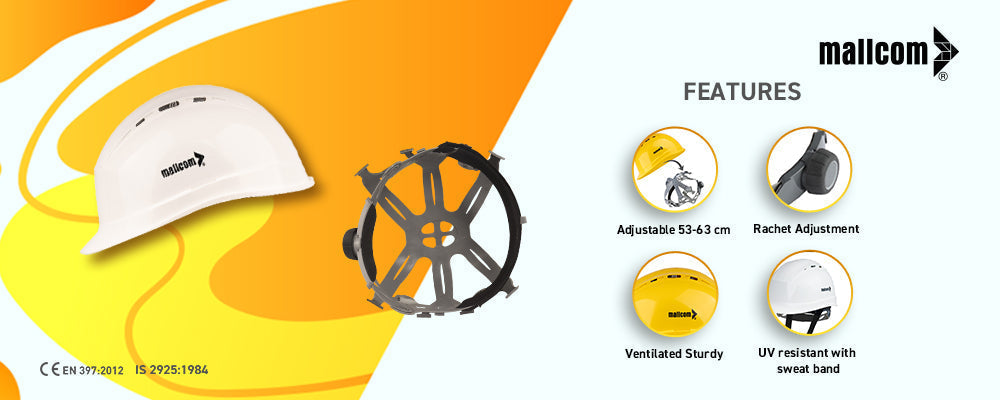
Understanding Head Protection Terminology for Workplace Safety
Share
Why Head Protection Matters
Only a handful of injuries are more fatal than those involving the head. A strong hit to the head can result in concussions, brain injuries, or even long-term damage. These risks run amok in areas such as the construction site or a manufacturing facility. Therefore, wearing a Safety Construction Helmet becomes a must for those working in these types of places.
Learning key terms related to Safety Helmets for Construction Sites can help workers choose the right gear. Let’s look at these terms in a little more depth.
Common Head Protection Terms
1. Bump Cap
A bump cap is a lightweight headgear that protects against small bumps and low-hanging objects. It does NOT replace a Safety Helmet for dangerous jobs requiring hard hats.
2. Types of Safety Helmets
Cap Style Helmet: This type has a brim only in the front.
Full Brim Helmet: This helmet has a brim that goes all the way around, giving extra protection from the sun, rain, and falling debris.
3. Important Parts of a Safety Helmet
Brim: The edge around the helmet.
Peak: The part that sticks out above the eyes for extra protection.
Shell: The hard outer part of the helmet that protects your head.
Ventilation Holes: Small holes that let air flow inside the helmet to keep you cool.
4. How the Helmet Stays in Place
Four-Point Suspension: The inside of the helmet is held in place by four attachment points.
Six-Point Suspension: A stronger system that gives better support and impact protection.
5. How to Adjust and Secure a Helmet
Chinstrap: A strap under the chin that keeps the helmet from falling off.
Pin Lock Suspension: Adjusts helmet size using small holes and locking pins.
Ratchet Suspension: A system that lets you adjust the helmet size easily by turning a knob.
6. Inside the Helmet: Harness System
Harness: The complete system that keeps the helmet secure on your head.
Headband: The part of the harness that wraps around your head.
Cradle: Straps inside the helmet that absorb shock and help with fit.
Anti-Concussion Tapes: Special straps inside the helmet designed to reduce impact.
Choosing the Right Safety Helmet
Selecting the right safety helmet isn’t just about compliance - it’s about making the right choice for yourself and your friends and close ones. Given the work conditions, potential hazards, and industry safety standards, making these choices becomes crucial. A well-designed helmet should offer a secure fit, proper ventilation, and a robust suspension system for maximum protection.
For enhanced safety, pairing your helmet with Welding Goggles or an FFP2 Face Mask can shield against dust, sparks, and harmful particles, ensuring all-around protection on the job.
[Click here to Shop for Mallcom Head Protection Gear]
Stay Safe, Stay Secure!
Understanding key Head Protection features goes on to empower workers and safety managers alike, helping them make the right choice. Be it a cap-style helmet, full-brim design, or ratchet suspension system, the right gear can be the difference between a close call and a life-threatening injury. Prioritize safety, because every head deserves the best protection.
FAQs
Q. What is the difference between a bump cap and a safety helmet?
A bump cap protects against small bumps, while a Safety Construction Helmet is designed to prevent serious head injuries from falling objects and impacts.
Q. Should I get a cap-style or full-brim helmet?
A cap-style helmet is good for standard construction work, while a full-brim helmet gives extra protection from sun, rain, and falling objects.
Q. Why is a ratchet suspension system better?
A ratchet suspension system lets you adjust the helmet size quickly and easily, making it more comfortable and secure.
Q. What do ventilation holes do in a Safety Helmet?
Ventilation holes improve air circulation inside the helmet, keeping workers cooler in hot conditions.
Q. Are safety helmets required at all construction sites?
Yes, Safety Helmets for Construction Sites are required by law to protect workers from serious head injuries caused by falling objects and other hazards.
Choosing the right helmet and safety gear can make a big difference in preventing injuries and staying safe on the job!
